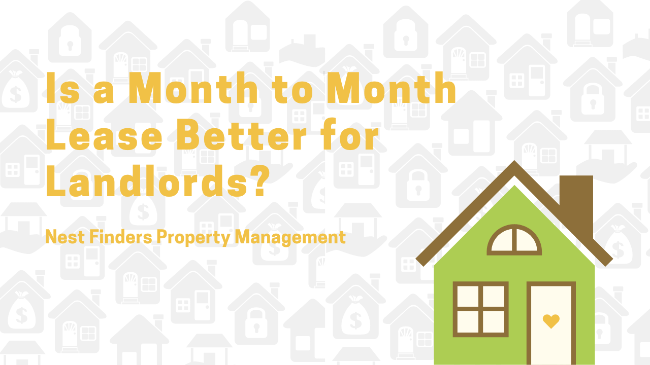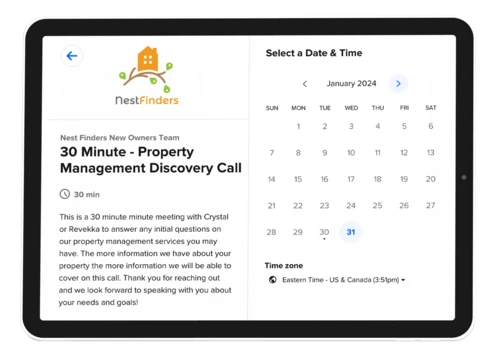A lease agreement is critical to experienced and new landlords' success, so knowing which kind of lease suits your needs best is essential. If you’re struggling to decide whether a month-to-month lease agreement is better than a longer lease agreement, keep reading!
An increasing number of landlords are offering month-to-month leases as an option for tenants. But many investors are asking: is this really the best option for landlords? In this article, we will explore the pros and cons of offering a month-to-month lease and examine the potential benefits and drawbacks.
What is a Month-to-Month Lease
A month-to-month lease is a shorter version of a standard one-year lease. Month-to-month leases are a more flexible type of rental agreement that allows landlords and tenants to choose whether they want to renew the lease regularly.
When operating on a month-to-month lease, both landlords and renters are able to end the tenancy by providing a written notice thirty days in advance of the move-out date. In addition, so long as they provide sufficient notice, landlords can change the rent prices on a monthly basis based on market demand.
The Pros of a Month-to-Month Lease
For many landlords, having a month-to-month lease can be a great option. It allows landlords more control over the property, which can be beneficial in many situations. In addition, landlords don’t have to wait to alter the terms of the lease as rental markets shift.
Flexibility
One of the most significant advantages for landlords is the increased flexibility that month-to-month leases offer. Landlords can give their tenants 30 days’ notice of rent price changes or to end the tenancy.
This flexibility also makes it easier to evict a tenant. If a tenant is not paying their rent or is causing other problems, the landlord can give them 30 days' notice to move out. As such, a landlord doesn’t have to go to court to evict a tenant.
Rent Price Adjustments
Landlords can adjust the rent every month depending on the rental market when they lease their rental on a monthly basis. This can be a big advantage for landlords in markets where demand for rentals shifts often. It is also helpful if your overhead costs increase.
Of course, you will need to give your tenant proper notice before increasing the rent price. In some cases, you may need to provide justification for the rent increase.
Strategic Lease Renewals
With a standard one-year lease, landlords often have the same tenant for a full year. Eviction on a standard one-year lease is a bit tricky, even if the tenants are causing problems. However, with a month-to-month lease, landlords can choose whether or not to renew a lease based on whether the tenant meets their needs.
The Cons of a Month-to-Month Lease
While this type of lease has its benefits, there are also some potential downsides that landlords should be aware of before leasing their property on a monthly basis. Let’s look at some drawbacks landlords may face with month-to-month leases.
Inconsistent Rental Income
The main disadvantage of a month-to-month lease is the inconsistency of rental income. Landlords who have month-to-month leases may find that their tenants move in and out more frequently. This can result in gaps in rental income.
As such, there’s no guarantee of how much money will come each month. This can make it challenging to budget and plan for repairs or renovations. Also, landlords may find getting approved for loans or lines of credit difficult if they have inconsistent rental income.
Increased Costs
As a landlord, you may be tempted to sign a month-to-month lease for more flexibility. However, this choice can come with increased overhead costs. Landlords often have to pay higher leasing fees because they take on more risk. Additionally, a landlord may have to pay for advertising and screening costs every time they need a new tenant.
Increased Workload
Month-to-month leases come with an increased workload. For example, you may have to screen new tenants more often. Additionally, you may receive more maintenance requests.
When to Consider a Month-to-Month Lease
Your Tenants Want to Move
A great reason to use a monthly lease is your tenant planning to move soon. In this case, it doesn’t make sense for the parties to sign a standard one-year lease because the tenant will move out before the end of the lease.
High Rental Demand
A month-to-month lease might be best for a landlord when the property is in a high-demand rental market. In active rental markets, landlords can find another tenant immediately if the current tenant moves out.
You Plan to Sell the Property
However, a monthly lease agreement can be ideal if you plan to sell your property. If your tenants are on a monthly lease, you can ensure they move out of the property before the new owners take possession.
Conclusion
Before you decide on the duration of your lease agreements, it’s crucial to consider your needs and investment goals! If you need help with this process or any other aspect of property management, reach out to the experts at Nest Finders Property Management today! Our team is dedicated to maximizing your ROI and helping you achieve your goals.



